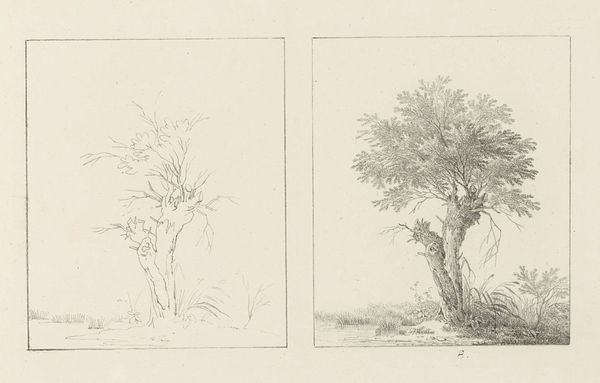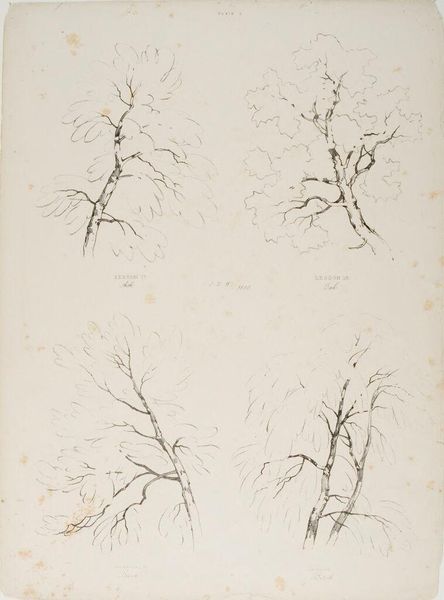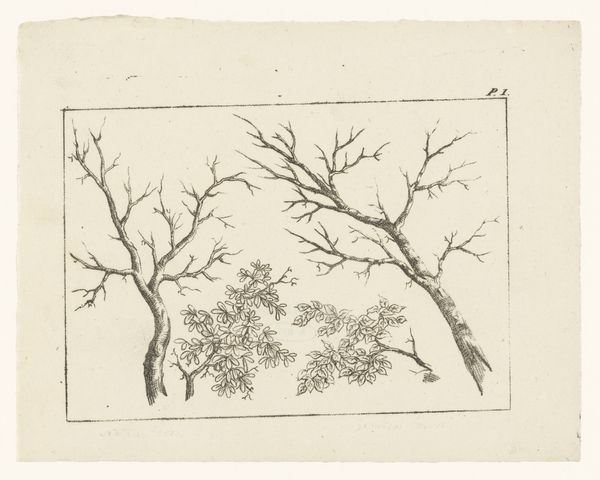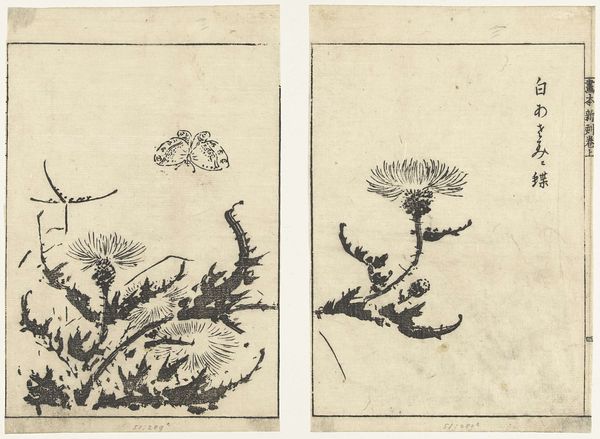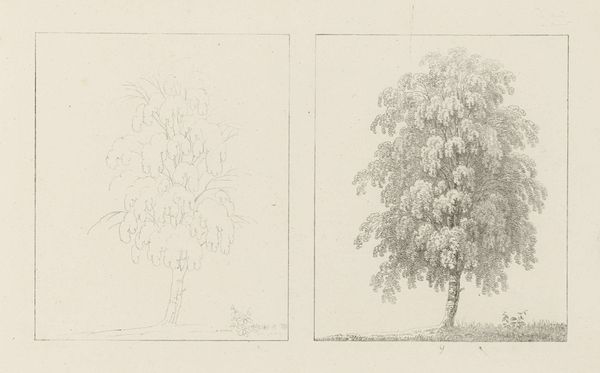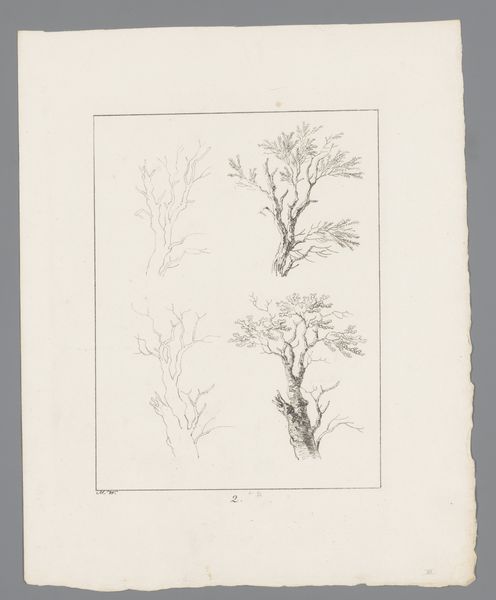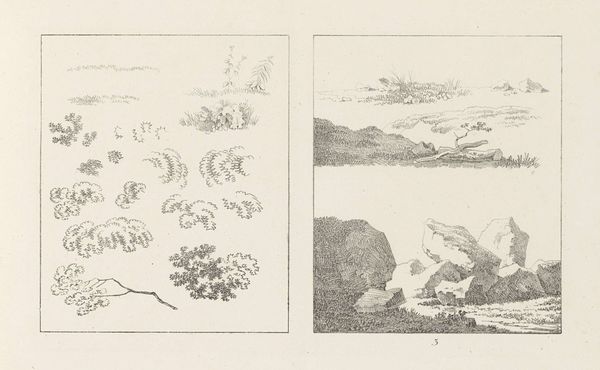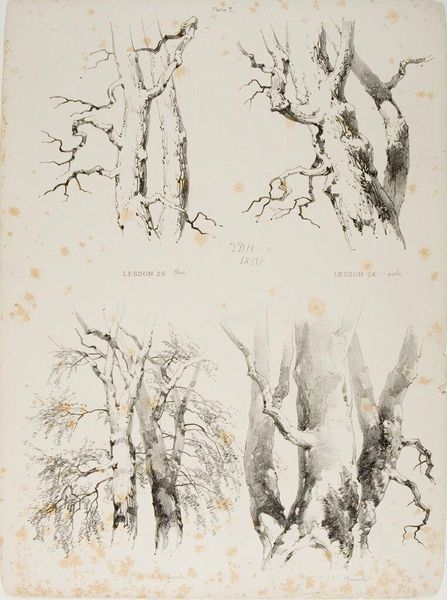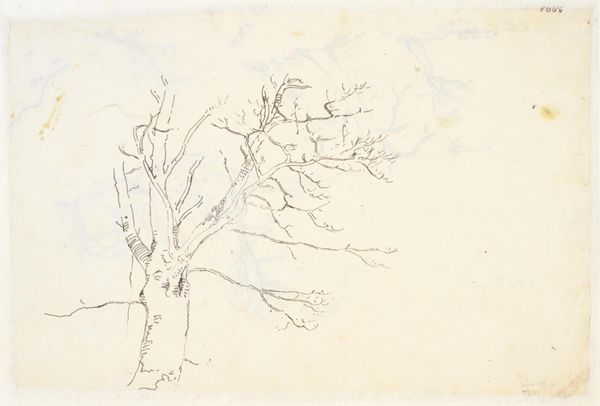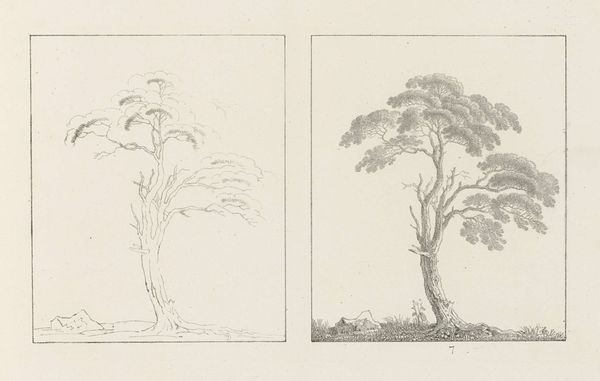
Albumblad met twee voorstellingen van kale boomtakken; links het ontwerp, rechts de uitvoering 1816
0:00
0:00
drawing, paper, pencil
#
tree
#
drawing
#
landscape
#
etching
#
paper
#
form
#
pencil
#
line
#
realism
Dimensions: height 317 mm, width 460 mm, height 206 mm, width 170 mm
Copyright: Rijks Museum: Open Domain
Editor: So, here we have Max Josef Wagenbauer’s "Albumblad met twee voorstellingen van kale boomtakken; links het ontwerp, rechts de uitvoering" from 1816, a drawing in pencil and etching on paper. The bare branches feel quite stark and vulnerable. What do you see in this piece? Curator: What strikes me is the duality presented—not just design versus execution, but the vulnerability of these skeletal trees as a stark mirror to the social climate of 1816. This was a year after the end of the Napoleonic Wars, a period marked by widespread famine and disease. Does seeing these branches, so meticulously rendered, evoke any of that in your mind? Editor: I hadn't considered the socio-political context. Knowing that makes me see them differently – less like simple studies and more like… emblems of resilience, perhaps? Curator: Precisely. The artist chooses to depict these stark, reaching forms. Considering this choice in light of the societal struggles, can we interpret them as a testament to the persistence of life, even in its most diminished state? Think of marginalized communities then and now - do you find resonance there? Editor: I think so. The drawing almost becomes a commentary on survival. That duality between left and right takes on new meaning as design becomes something forged in struggle, maybe? Curator: Exactly! And how does the act of depiction itself play a role? Wagenbauer chooses drawing and etching—methods demanding precision. Can we view that meticulousness as a form of honoring something so easily overlooked, like the strength inherent in perceived fragility? Editor: Definitely. It makes me rethink my initial assumptions, seeing them as more than just aesthetic studies, now infused with social and historical significance. Curator: And that, ultimately, is where art can truly resonate – when we engage with its context and allow it to speak to our present.
Comments
No comments
Be the first to comment and join the conversation on the ultimate creative platform.

